[Twight] is brutally honest, and nobody, including his friends or himself, is safe from his high standards and criticism. Many of these [collected pieces] are gems and shed new light on his earlier work. This is literature about the soul of alpinism, not a blow-by-blow account of climbing drudgery from some tourist peak bagger.
Rock & Ice
The character who emerges [in Kiss or Kill] is a walking cautionary tale, one who has given in to his climbing obsessionto be the hardest man on the hilland is willing to pay dearly.
Outside
Deeply personal, arrogant, grandiose, thrilling and unapologetic, this record of [Twight's] career will gratify and repel extreme athletes, their admirers, and their detractors.
Publishers Weekly
With chapter titles such as House of Pain and I Hurt, Therefore I Am, no one would mistake Twight for a member of the Von Trapp family. A bracing tonic for us desk-bound wussies.
Pittsburgh Tribune-Review
Twight's writing may be as risky as the routes he's climbed. I enjoyed reading what I would not dare write myself. [It's] an accurate, painfully honest, and sometimes uncomfortable account of the price he paid for climbing at the highest level.
John Bouchard, Ice Climbing Prophet, Paragliding Pioneer, and Alpine Climbing Iconoclast
Most mountaineering literature reads like a cross between forensic pathology and the Hardy Boys. Just as punk music ripped a hole in the dead world of eighties rock, Twight's punk-fueled writing put the soul back into climbing literature. One copy of Kiss or Kill is worth hundreds of times more than all the Everest dreck put together.
Will Gadd, Mixed Climbing Visionary, 2000 Ice World Cup Champion, Paragliding Distance Record Holder 1999 (180 miles)
Climbing can be as addictive as heroin, and sometimes just as dangerous. Twight pulls you into his world of fear, death, and brief, impossible highsthen won't let you go. A fascinating and often disturbing glimpse into obsession.
Kyle Mills, author of Free Fall and Burn Factor
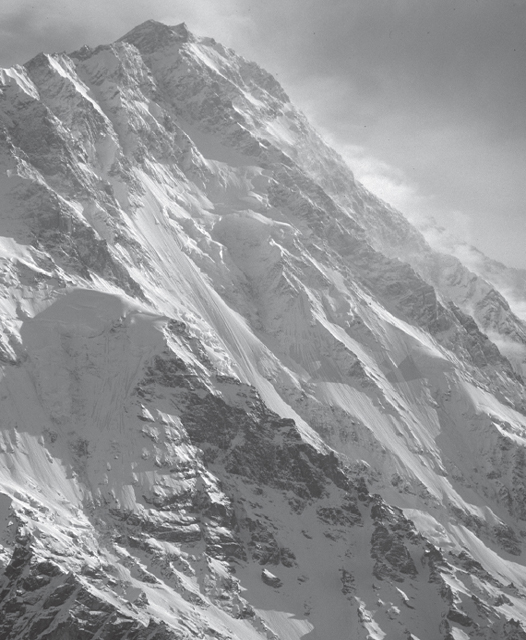
 | Published by
The Mountaineers Books
1001 SW Klickitat Way, Suite 201
Seattle, WA 98134 |
2001 by Mark Twight
All rights reserved
Cloth: First printing 2001
Paper: First printing 2001, second printing 2002, third printing 2004, fourth printing 2005, fifth printing 2007, sixth printing 2008, seventh printing 2009, eighth printing 2010
No part of this book may be reproduced in any form, or by any electronic, mechanical, or other means, without permission in writing from the publisher.
Distributed in the United Kingdom by Cordee, www.cordee.co.uk
Manufactured in the United States of America
Project Editor: Kathleen Cubley
Editor: Paula Thurman
Cover and book design: Ani Rucki
Layout: Alice C. Merrill
All photos by the author unless otherwise noted
Front and back cover photographs by Brooks Freehill
Frontispiece: The Rupal Face of Nanga Parbat, Pakistan
Library of Congress Cataloging-in-Publication Data
Kiss or kill: confessions of a serial climber / Mark Twight.1st ed.
p. cm.
ISBN 0-89886-763-0 (cloth)
ISBN 0-89886-887-4 (paper)
1. Twight, Mark, 1961- 2. MountaineersUnited StatesBiography. I. Title: Confessions of a serial climber. II. Title.
GV199.92.T87 A3 2001
796.522092dc21
00-012356
CIP
 Printed on recycled paper
Printed on recycled paper
ISBN (paperback): 978-0-89886-887-6
ISBN (ebook): 978-0-89886-919-4
To
LISA,
my woman,
AND ZUMA,
who reigns.
FOREWORD
I first met Mark on a pistol range in Colorado. Even as a novice his movements were fluid and smooth. I saw the same effortless manner while rock climbing with him and some friends a few years later, as if he were part of the mountain. As I watched him train with the pistol, I could see he had it: the ability to listen, assimilate, and execute. Although our paths of expression differ, I realized our driving force is the sameto master our personal environments, whatever the conditions at the moment.
Curious, I asked what attracted a professional climber to pistol training. He said his best climbs were accompanied by a feeling of becoming one with the environment. At his best, he was the environment. I understood his answer. I disappear during an impeccable performance. He said this feeling, if it arrived at all, typically followed six months of training, two months in a foreign country, and acclimatizing at altitude for two weeks. He found he could challenge himself in a similar way while training and competing with a pistol without leaving the state. This comment surprised me. I figured climbers would believe nothing challenged you like the fear of death. At that point I knew Mark had realized that fear takes different forms depending on the individual. Life is fear: fear of alpine climbing, fear of competition, fear of failure, fear of death. Mark found a way to grapple with his personal fears without being Mark the Climber.
We were talking after a pistol competition and one of the top shooters was joking and clowning around. Later I asked Mark, You probably have those kind of guys in climbing, right? His quick reply: Not that are still alive. There is a saying I learned while road racing motorcycles, When the green flag drops, the bullshit stops. While this holds true in all forms of human endeavor, I can't think of a better analogy than extreme alpinism. However, in Mark's case there is no bullshit to drophe is pure action.
A friend and I were looking through Mark's book Extreme Alpinism: Climbing, Light, Fast, & High. She commented that Mark doesn't seem like the type of guy who would do the extreme climbing depicted in the book. Just looking at the pictures is overwhelming. The average person can't even imagine what it would take to attempt those situations, let alone survive them. That is Markhe doesn't display his climbing ego in order to justify his self-worth.
Shortly after meeting Mark, I learned through his friends that his nickname was Dr. Doom. I had a good laugh over this because the Mark I knew appeared as nothing of the sort. I knew Mark Twight the shooter: confident, deliberate, and emphatic. Even when climbing with Mark, I had never seen a dark side, someone who longed to be on the precipice of death. However, after reading his earlier writings, I unearthed Dr. Doom. In House of Pain he writes, I really don't give a shit what anyone thinks. I do what I do. I succeed. I fail. Sometimes Im so lazy I do neither. I live and breathe along with my problems and my work and my self-inflicted pain. When we undeniably see that we create our own misery, we stop. The force generated by this insight changes anyone. Even Mark. His internal struggle for personal freedom, outwardly manifested through his climbing, eventually transformed Dr. Doom into Dr. Om.
I was struck when he wrote, The future progression of alpine climbing resides in the mind. Improvements in physical fitness and equipment offer relatively limited advances to be made, while great strides may result from perfecting the minds of a few gifted climbers. An impressive statement from a man in a sport dominated by egos. I was surprised to find references to Krishnamurti and Carlos Castenada in the bibliography, another departure from the usual climbing book fare.

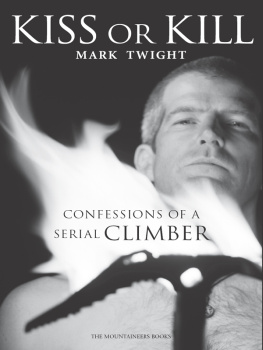


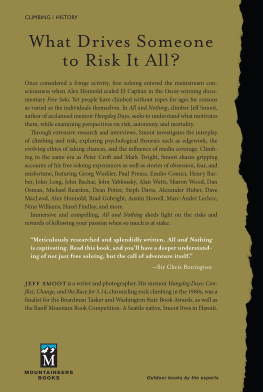




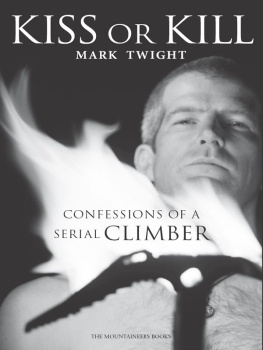
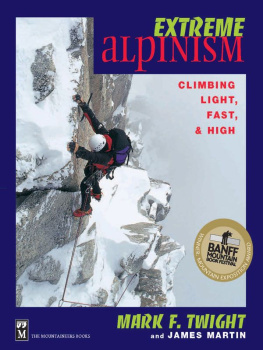





 Printed on recycled paper
Printed on recycled paper